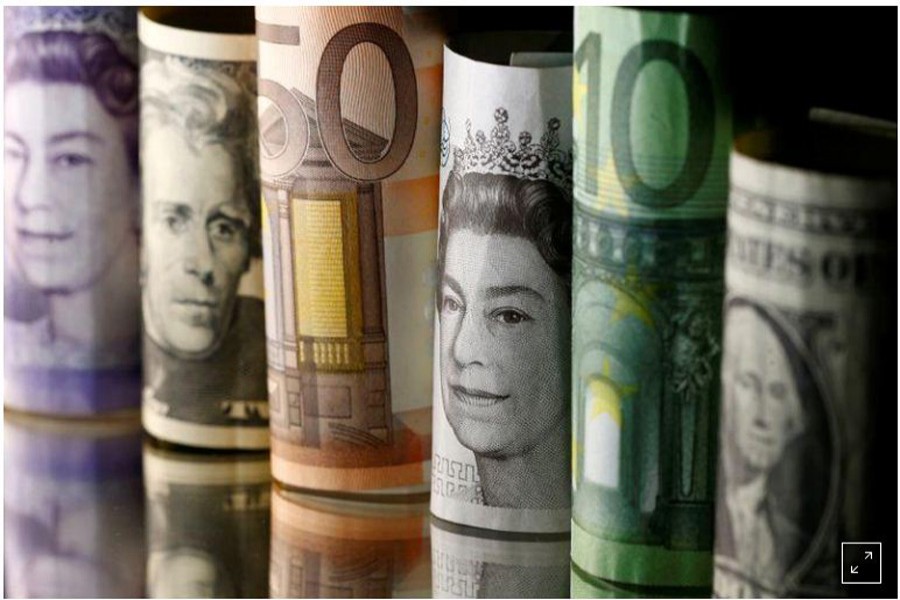The euro rose to $1.22 and the dollar fell on Wednesday as foreign exchange traders looked beyond US President Donald Trump’s threat to block a $892 billion COVID-19 aid package, reports Reuters.
Trump said the long-awaited stimulus package should be amended to increase the amount in the stimulus checks -- potentially disrupting the bill.
But foreign exchange markets were little changed, with the dollar edging lower and currencies deemed riskier, such as the Australian dollar, making solid gains.
“The financial markets have not reacted notably to this threat from President Trump to block the package – our sense is there remains an expectation that Trump will sign it in the end,” MUFG analysts said in a research note.
They added that the market’s indifference could shift to risk aversion and a rebound for the dollar if Republicans in the Senate blocked Trump’s larger stimulus demand.
In London trading the dollar dropped 0.1 per cent against a basket of currencies.
The dollar index has weakened more than 6.0 per cent this year as investors bet the US Federal Reserve will keep its policy ultra-easy. Expectations for further declines by the dollar are helping buoy stock markets and emerging-market currencies.
The euro climbed 0.3 per cent to $1.2192 after briefly hitting $1.22. The euro earlier this month hit its highest in more than two-and-a-half years, $1.2273.
Sterling rose 0.5per cent to $1.3442 and was also higher against the euro amid speculation the European Union and Britain will announce a Brexit trade deal on Wednesday. However, a British government minister said serious disagreement remained between the two sides over competition and fishing.
The pound has been jolted up and down on hopes for a deal before Britain’s Brexit transition period ends on Dec 31. Most foreign exchange traders think a deal will be agreed, even with so little time left to forge and ratify an arrangement.
“The market is just waiting for the final result of Brexit talks, and in the meantime being swung by conflicting headlines,” said Shinichiro Kadota, senior currency strategist at Barclays Capital in Tokyo. “Sterling will remain volatile.”
Elsewhere, the Australian dollar gained 0.7 per cent to as high as $0.7576, boosted by signs that a small COVID-19 outbreak in Sydney would be contained.
The dollar dropped 0.3 per cent against the Japanese yen, another safe haven, to 103.35.
The US currency was down 0.3 per cent versus the Chinese yuan in the offshore market to 6.5232 yuan per dollar.


